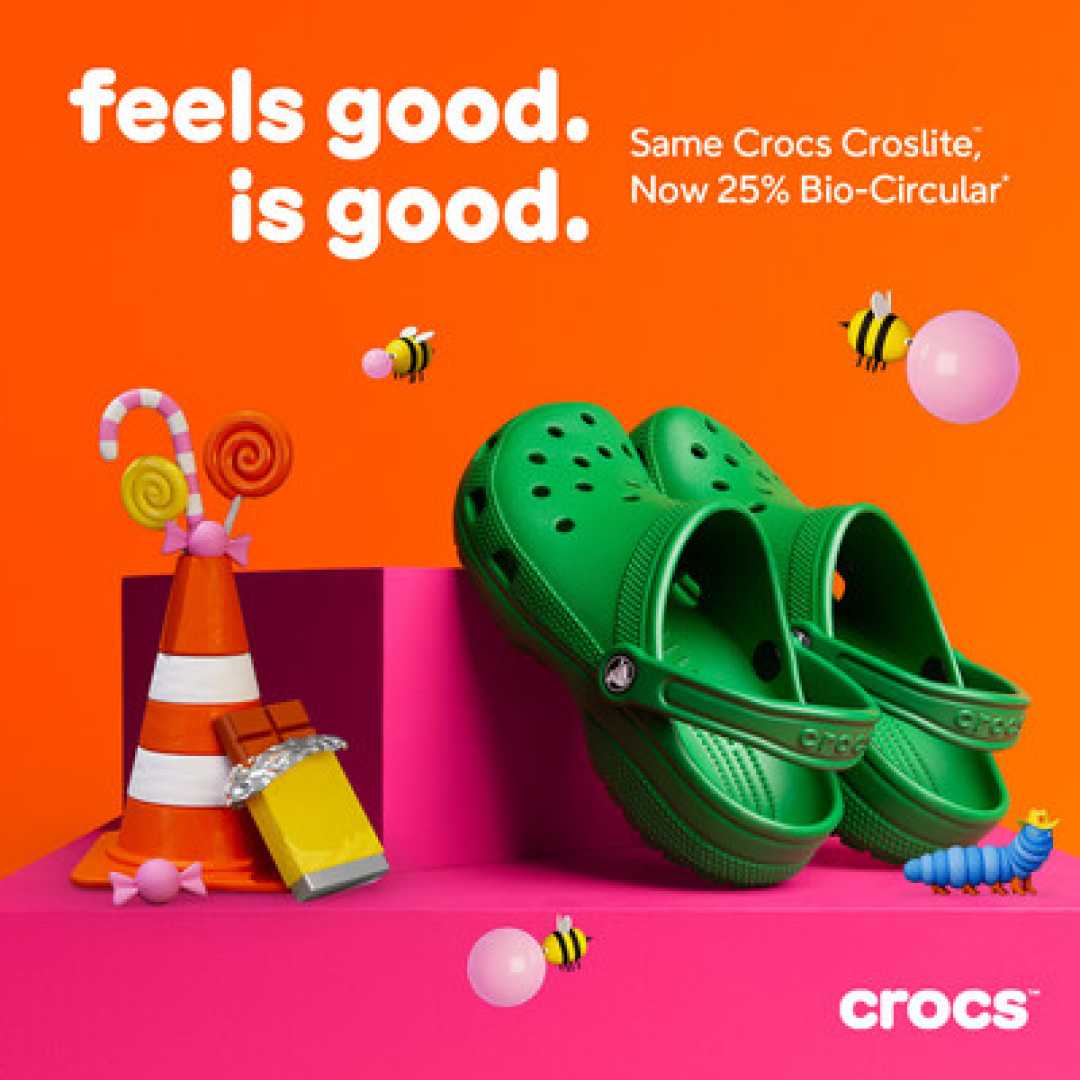Business
Crocs Advances Towards Net-Zero Goal with Bio-Circular Materials

Crocs is making significant strides in increasing the use of bio-based materials in its footwear, with the aim of achieving its net-zero target by 2040. The company announced that it is currently halfway to achieving its goal of incorporating 50% bio-circular content in its shoes by the year 2030. Presently, about 25% of the materials used in Crocs shoes are bio-circular, comparing favorably from 17.3% in 2023.
The term “bio-circular” refers to materials derived from renewable sources, including waste products like used cooking oils and byproducts from the paper industry. This approach helps reduce the company’s reliance on fossil fuels which are conventionally used in manufacturing processes. Moreover, by using these bio-circular materials, Crocs has managed to lower its total emissions by 3% in 2023, reflecting a decrease in the carbon footprint of each pair of clogs by 6.1% since 2021.
According to Deanna Bratter, Crocs’ vice president and global head of sustainability, 97% of the company’s emissions are indirect, originating from its supply chain. To address this, Crocs is engaging more deeply with suppliers, transportation partners, and distribution providers to foster sustainable practices. The company’s signature material, Croslite, comprises 80% ethylene-vinyl acetate (EVA) mixed with bio-circular components.
Despite the higher cost of these renewable materials, Crocs has decided not to increase the price of its products, such as its popular “Classic Clogs” which are priced around $40. The company’s efforts have garnered commendation from sustainability experts like Julia Freer Goldstein, who praised Crocs for its transparency regarding emission reductions.
Crocs is among a minority of footwear companies actively reducing their carbon footprint through innovative materials. The company uses a method called mass balance to manage materials’ flow throughout its intricate supply chain. This process can sometimes lead to confusion, as it might result in claims of bio-based content that aren’t readily apparent in individual products. Nevertheless, Crocs remains focused on overall transparency by communicating the annual percentage of bio-circular materials used.
In addition to incorporating sustainable inputs, Crocs has also expanded its take-back program to recycle production waste, making its products more sustainable throughout their lifecycle. As the company continues to refine its circular economy model, executives stress the importance of continual input for manufacturing, urging caution against overselling circularity.
In collaboration with partners like New Balance and Target, Crocs aims to influence a broader industry shift towards sustainable practices. As Crocs continues to explore sustainable alternatives, it hopes its efforts will inspire other footwear brands to adopt similar environmentally conscious approaches.












